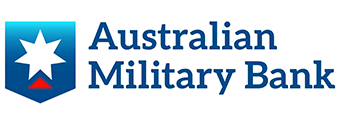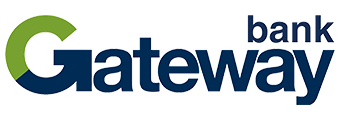Recent construction firms to collapse include Probuild and Condev, while Metricon is reportedly next.
Company memos from the construction giant seen by News Corp papers detailed concerns about cash flow.
On a side note, as Metricon is a privately-held company it is unclear as to how much it collected in JobKeeper.
The former two companies cited rising material costs and lockdowns as reason for their collapses.
However struggles in the construction industry are yet to filter through to insolvency data.
There were 80 personal insolvencies in the construction industry in April, down from 96 in March - about half of what was seen in the months leading up to the pandemic in 2020.
Early in the pandemic, construction firms and smaller builders were reportedly run off their feet as HomeBuilder brought forward a lot of demand.
At the time, the $15,000 to $25,000 grants were thought to be a boon for the construction industry.
Ken Morrison, chief executive of the Property Council of Australia, called HomeBuilder the "popstar of government stimulus".
"Highly effective, immediate and good value for money," Mr Morrison said in 2020.
Grattan Institute's Brendan Coates called HomeBuilder "bad economics", while ANZ senior economist Felicity Emmett said HomeBuilder only "prevent[ed] the worst".
Now the worst seems to be here.
The maelstrom of huge project backlogs and soaring material costs means some tradies are realistically losing money on the projects they quoted one or two years ago and are only just now starting.
This is seen in the ABS' inflation data, with the 'goods' component starting to outweigh the 'services' component.
Headline inflation hit 5.1% - the cost of goods rose 6.6% while services rose just 3.0%.
"These supply constraints are a major cause of the inflationary pressure. The increase in the cash rate will slow demand for homes, but it does not ease the constraints on global supply chains, increase the supply of skilled labour or improve productivity," said Tim Reardon, Housing Industry Association's (HIA) chief economist.
Gary Brinkworth, CEO of property advisers Herrod Todd White, said many home buyers may now be pushed to existing dwellings as opposed to building their own.
"We’ve observed that homeowners and investors alike are being drawn to completed homes rather than those with renovation potential," Mr Brinkworth said.
"Given costs are predicted to be elevated over the coming one-to-two years, I’d venture that finished homes will not only retain their price premium for some time, but the value spread between renovated and unrenovated properties will, in all likelihood, get wider."
The most recent ABS building approvals data shows a 3.1% decline for March compared to February.
In the first three months of the year compared to the previous quarter, falls were most pronounced in Western Australia (-20.4%), and South Australia (-16.2%).
The most recent ABS data for construction work completed also shows a slide - from the September quarter of 2021 to the December quarter, the value of residential building work completed declined 2.9% to $18.3 billion.
HIA new home sales data also shows the sales of new detached homes fell by 1.2% over the month of April.
The advent of HomeBuilder also coincided with a sharp drop in the average value of owner occupier construction loans, as seen in the graph below.
Advertisement
Building a home? This table below features construction loans with some of the lowest interest rates on the market.
| Lender | Home Loan | Interest Rate | Comparison Rate* | Monthly Repayment | Repayment type | Rate Type | Offset | Redraw | Ongoing Fees | Upfront Fees | Max LVR | Lump Sum Repayment | Additional Repayments | Split Loan Option | Tags | Row Tags | Features | Link | Compare | Promoted Product | Disclosure |
|---|---|---|---|---|---|---|---|---|---|---|---|---|---|---|---|---|---|---|---|---|---|
6.18% p.a. | 6.44% p.a. | $2,575 | Interest-only | Variable | $0 | $530 | 90% |
| Promoted | Disclosure | |||||||||||
5.94% p.a. | 5.96% p.a. | $2,978 | Principal & Interest | Variable | $0 | $350 | 80% | Disclosure | |||||||||||||
6.19% p.a. | 6.25% p.a. | $2,579 | Interest-only | Variable | $0 | $835 | 90% | ||||||||||||||
6.39% p.a. | 6.78% p.a. | $2,663 | Interest-only | Variable | $null | $721 | 90% | ||||||||||||||
6.53% p.a. | 6.56% p.a. | $2,721 | Interest-only | Variable | $0 | $450 | 80% | ||||||||||||||
6.69% p.a. | 6.66% p.a. | $2,788 | Interest-only | Variable | $0 | $530 | 90% | ||||||||||||||
6.99% p.a. | 7.76% p.a. | $2,913 | Interest-only | Variable | $20 | $644 | 90% | ||||||||||||||
8.14% p.a. | 8.47% p.a. | $3,718 | Principal & Interest | Variable | $0 | $0 | 75% | ||||||||||||||
8.45% p.a. | 7.53% p.a. | $3,521 | Interest-only | Variable | $0 | $1,212 | 90% | ||||||||||||||
8.43% p.a. | 8.50% p.a. | $3,820 | Principal & Interest | Variable | $0 | $900 | 80% | ||||||||||||||
6.19% p.a. | 6.61% p.a. | $3,059 | Principal & Interest | Variable | $395 | $null | 95% | ||||||||||||||
5.43% p.a. | 6.02% p.a. | $2,817 | Principal & Interest | Variable | $350 | $0 | 90% |
Photo by James Sullivan on Unsplash

Ready, Set, Buy!
Learn everything you need to know about buying property – from choosing the right property and home loan, to the purchasing process, tips to save money and more!
With bonus Q&A sheet and Crossword!














 Denise Raward
Denise Raward


 Hanan Dervisevic
Hanan Dervisevic
 Emma Duffy
Emma Duffy
